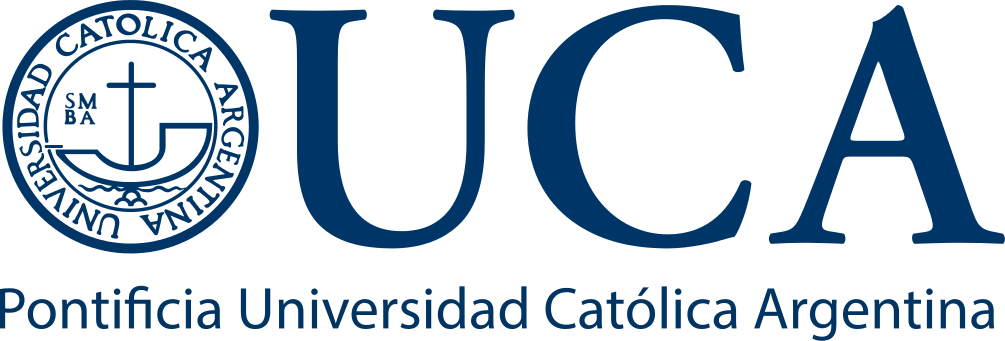Por favor, use este identificador para citar o enlazar este ítem:
https://repositorio.uca.edu.ar/handle/123456789/19094| Título: | Ideas erróneas sobre daño cerebral adquirido en población de la Ciudad Autónoma de Buenos Aires | Autor: | Tabernero, María Eugenia Leonardelli, Eduardo Miguel Gallo, María Fernanda Cores, Evangelina Valeria Deschle, Florencia |
Palabras clave: | IDEAS ERRONEAS; DAÑO CEREBRAL ADQUIRIDO; FAMILIARES; TRABAJADORES DE LA SALUD | Fecha de publicación: | 2024 | Editorial: | Sociedad Neurológica Argentina | Resumen: | Introducción: Diversas investigaciones han demostrado la existencia de ideas erróneas sobre
dano˜ cerebral adquirido (ieDCA) y sus consecuencias en diferentes poblaciones.
Objetivo: Describir la presencia de ieDCA en población general (PG), trabajadores de la salud
(TS) y familiares de pacientes (F) de la Ciudad Autónoma de Buenos Aires, mediante la
aplicación de un cuestionario autoadministrable.
Sujetos y métodos: La muestra incluye 333 sujetos. Se distinguen 3 submuestras: 151 casos
para PG, 89 para TS y 93 para F. Se utilizó el cuestionario para ieDCA traducido al espanol ˜
por Navarro-Main et al., al que se agregaron 5 ítems vinculados a secuelas cognitivas y
emocionales, resultando un cuestionario integrado por 24 afirmaciones (DCA-24).
Resultados: Las afirmaciones con alta tasa de error para el grupo PG fueron la 2, 5, 6, 8 y 15.
Para el grupo PS: la 2 y la 15. Finalmente, para el grupo F: las afirmaciones 2, 5 y 15. Se observaron diferencias significativas entre las submuestras para el total de respuestas correctas
(p < 0,001). El análisis post hoc evidenció mejor posicionamiento general de TS respecto de
PG y F, sin diferencias entre estos últimos (p < 0,001).
Conclusiones: Los TS mostraron mayor conocimiento sobre dano˜ cerebral adquirido que la
PG y los F. En nuestro contexto ser F parece no incrementar los conocimientos sobre esta
problemática. Empleando el DCA-24 hallamos ideas erróneas referidas a las alteraciones
cognitivas y la amnesia, la recuperación y las manifestaciones físicas y conductuales del
dano˜ cerebral adquirido en toda la población. Introduction: Various studies have demonstrated the existence of misconceptions about acquired brain injury (ABI) and its consequences in different populations. Objective: To describe the presence of ABI misconceptions in the general population (GP), healthcare workers (HCW), and patient family members (FM) of the Autonomous City of Buenos Aires, through the application of a self-administered questionnaire. Subjects and methods: The sample includes 333 participants. Three sub-samples are distinguished: 151 cases for GP, 89 for HCW, and 93 for FM. The ABI questionnaire translated into Spanish by Navarro-Main et al. was utilized, to which five items related to cognitive and emotional sequelae were added, resulting in a questionnaire comprising 24 statements (DCA-24). Results: Statements with a high error rate for the GP group were 2, 5, 6, 8, and 15. For the HCW group: 2 and 15. Finally, for the FM group: statements 2, 5, and 15. Significant differences were observed between the sub-samples for the total correct responses (p < .001). Post hoc analysis evidenced a better overall positioning of HCW compared to GP and FM, with no differences between the latter (p < .001). Conclusions: HCW demonstrated greater knowledge about acquired brain injury than GP and FM. In our context, being FM does not seem to increase awareness about this issue. Using the ABI-24, we found misconceptions related to cognitive impairments and amnesia, recovery, and physical and behavioral manifestations of acquired brain injury across the entire population. |
URI: | https://repositorio.uca.edu.ar/handle/123456789/19094 | ISSN: | 1853-1490 (online) 1853-0028 (impresa) |
Disciplina: | PSICOLOGIA | DOI: | 10.1016/j.neuarg.2024.09.003 | Derechos: | Atribución-NoComercial-CompartirIgual 4.0 Internacional | Fuente: | Neurología argentina. 2024 |
| Aparece en las colecciones: | Artículos |
Ficheros en este ítem:
| Fichero | Descripción | Tamaño | Formato | Login |
|---|---|---|---|---|
| ideas-erroneas-daño.pdf | 372,89 kB | Adobe PDF | SOLICITAR ACCESO |
Este ítem está sujeto a una Licencia Creative Commons

